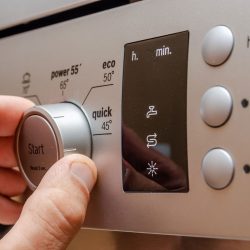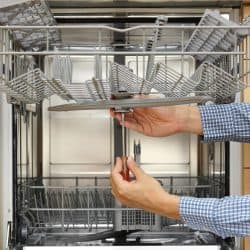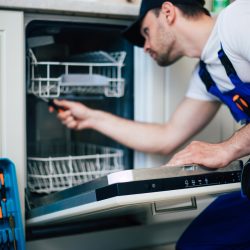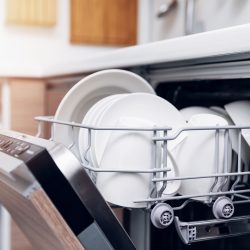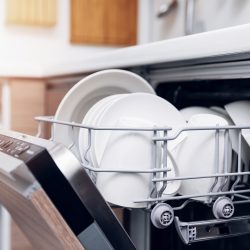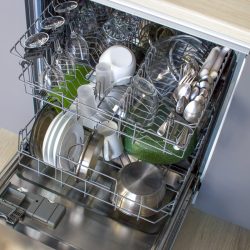At some point in time, you may experience functional issues with your KitchenAid dishwasher. This is where a reset is often necessary. But what are the steps to perform a reset on this specific dishwasher brand? We have researched KitchenAid dishwashers for this post, and we will answer these inquiries for you.
While the specific reset sequence may vary by model on KitchenAid dishwashers, the following sequence will work on many of them. To reset your Kitchenaid dishwasher:
- Press both "Energy Saver Dry" and "Hi-temp Scrub" buttons 5 times simultaneously
- After doing so, you should see the lights on the control panel display flash repeatedly for 4-5 seconds.
- Afterward, let the unit sit for 10 minutes to give the dishwasher time to reset.
Once it resets, try initiating a new cycle. If this doesn't work, you can also perform a manual reset.
There are several reasons that may cause a dishwasher to malfunction. However, a reset is often the quickest and easiest way to clear the misfunction so that you can start a new cycle. In the event that the reset doesn't work, the next best thing to do is to initiate the diagnostic mode on the dishwasher. Continue to learn more about how to perform the steps on a KitchenAid dishwasher.

Kitchenaid Dishwasher Reset Options
As mentioned previously, the particular specific steps to reset a KitchenAid dishwasher may vary depending on the model. However, there is always a manual reset option and reboot that you can perform as well.
For the manual reset, simply unplug the power cord from the dishwasher unit and let it stay unplugged for about 5 minutes. This will give the dishwasher's computer time to reset itself.
Afterward, plug the power cord back in and look at the display panel to see if the error codes have cleared.
If the manual reset doesn't work, it's best to locate your user's manual to determine the cause for the error code.
If you are unable to locate the manual, you can enter the model number for your KitchenAid dishwasher online to find it.
If the hard reboot doesn't work, the next step is to perform a diagnostic test on the dishwasher. Sometimes it may be a small issue that you're able to fix on your own.
And in other cases, the dishwasher may require the assistance of an expert—especially if the malfunction is due to a faulty or broken part.
Learn more about Kitchenaid dishwasher functions:
Why does my KitchenAid dishwasher start and stop?
There are a few reasons why your KitchenAid dishwasher may start and stop mid-cycle. Sometimes it'll take a bit of troubleshooting to narrow down the issue.
And in some cases, you may need to seek the assistance of an appliance technician.
Issues with the door latch
The door latch on the KitchenAid dishwasher ensures that the water doesn't escape from the door during the wash cycle. If the door latch is disconnected, you may also hear beeping coming from the dishwasher.
This illustrates that the latch has come loose during the middle of the cycle, and it's likely that the dishwasher will not start until it's reconnected.
There are also cases where the sensor on the door latch can be shorted, and a broken sensor could also cause the issue. If the door latch appears damaged, it will likely be moving around loosely or missing entirely.
You can replace the latch yourself using a screwdriver. However, if the sensor is broken, you will need to open up the dishwasher to replace it.
The thermal fuse needs to be replaced
The thermal fuse on the dishwasher is a component that provides power to the unit's circuit board. It also helps to prevent dangerous situations that can lead to a fire.
If your dishwasher is over 5 years old, the thermal fuse may be the reason why the dishwasher starts and stops.
Often the fuse will become faulty and begin to operate as a safety switch, causing the motor to stop when the unit becomes too hot.
The fuse may also start to short, preventing the dishwasher from heating up the water during the wash and rinse cycle. And in some cases, the fuse may simply be loose.
To fix this issue, you will need to access the thermal fuse by removing the front panel from the dishwasher. The thermal fuse will sit right next to the circuit board in most cases, though it's best to refer to your manual for a specific location.
Check the fuse using a multimeter and if it has no continuity, replace it. The price for a KitchenAid thermal fuse typically ranges from $11 to $28.
Check out this multimeter on Amazon.
The dishwashers electronic control board is faulty
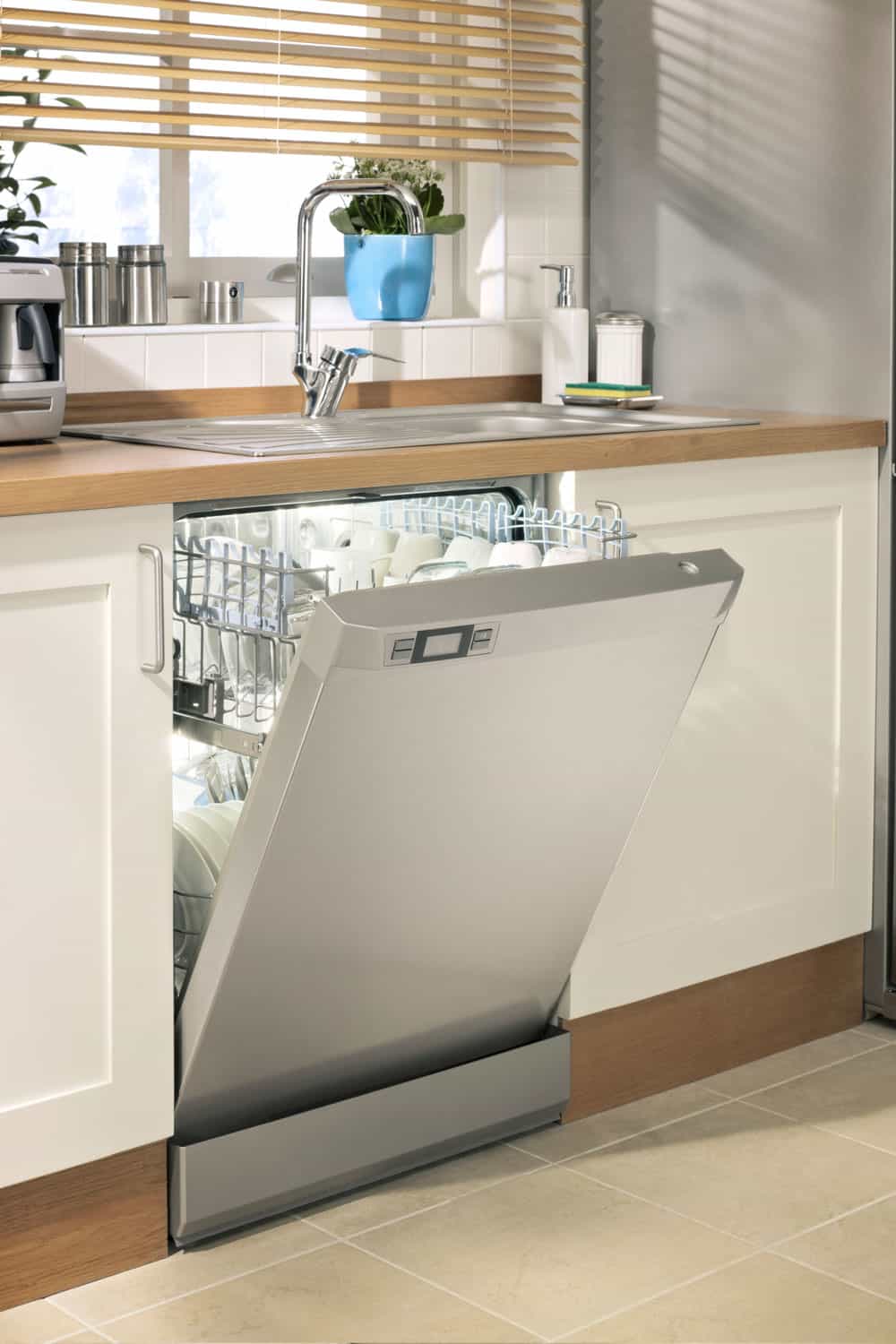
Electronic circuit boards are designed to last the entire lifespan of a dishwasher. However, they can become faulty and short out at some point.
When this happens, the dishwasher will begin malfunctioning, and this includes starting and stopping mid-cycle.
The circuit board for most KitchenAid dishwashers is relatively the same, though they may have small variations per model. The board will have many connections.
However, the best thing to do is to have it tested by an experienced technician or use a multimeter to check its continuity yourself.
Unfortunately, circuit boards can't be repaired they can only be replaced. Note that these boards can be costly, and replacing them can range anywhere from $250 to over $300.
Why is my KitchenAid dishwasher beeping?
The sensor causes the beeping inside of the dishwasher to let you know that something has interrupted the washing cycle.
If your KitchenAid dishwasher is beeping, the chances are that the door latch needs to be connected or that the door needs to be closed completely.
However, the beeping can also signal that there is a component failure somewhere inside of the unit. The beeping can also signal that the dishes are ready to be removed from the unit and complete the cycle.
What does a blinking blue light mean on a KitchenAid dishwasher?
A blinking blue light can mean several things on a KitchenAid dishwasher, though it depends on the specific model.
However, the most common reasons are a shortage in the control panel, part failure, or the interruption of the wash cycle by the door latch. It's best to check your user manual to find the exact cause of the blinking light.
How do I run a diagnostic on my KitchenAid dishwasher?
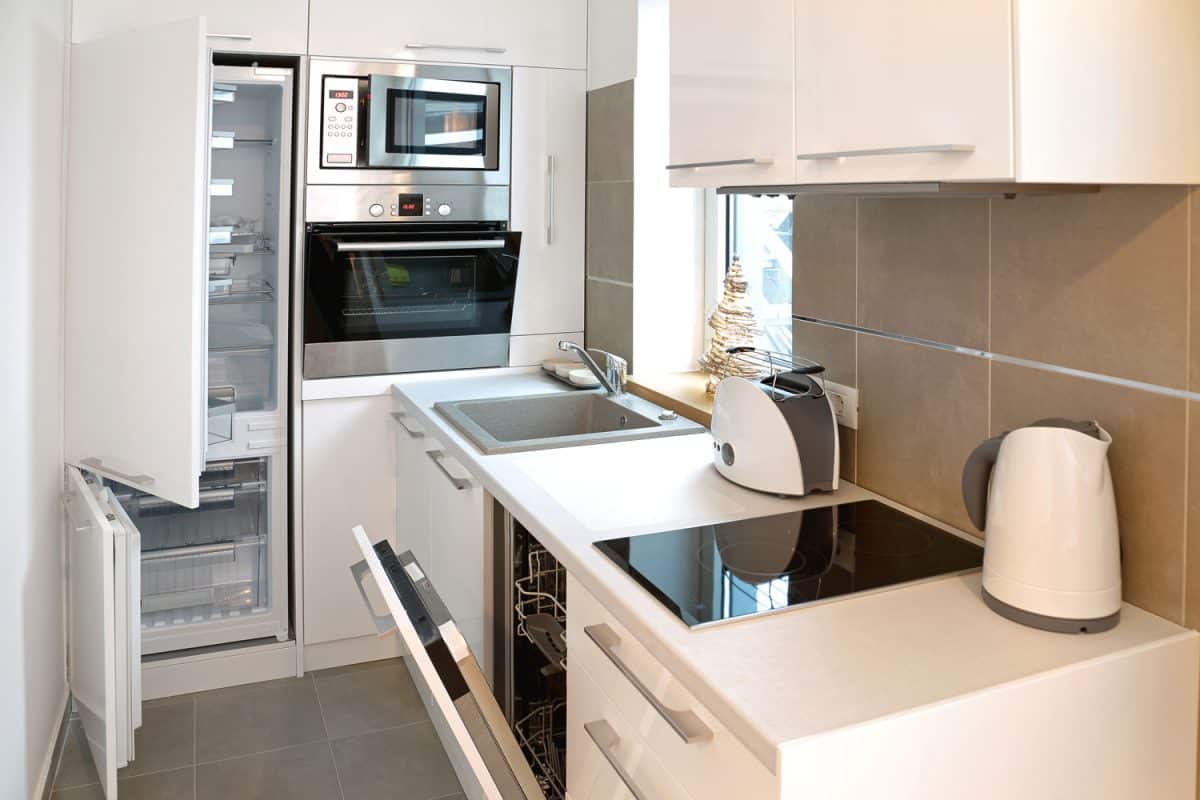
It depends. Each KitchenAid dishwasher may have its own sequence of steps to initiate the diagnostic mode. You'll need to look in your user manual to determine the specific steps for your dishwasher model.
Below are the sequences for three popular Kitchenaid dishwasher models.
Kitchenaid models 8572216 and W10142800B
To initiate the diagnostic process on this model, press the "Heated Dry" and "Normal" twice in succession while the unit is in standby mode.
Kitchenaid model KUDD03DT
For this particular model, you need to press the “High Temp Wash” button six times, and then press the "Start" button eight times. Note that you will need to press these buttons quickly.
Wrapping Things Up
KitchenAid units are some of the most reliable dishwashers in the marketplace. However, they encounter functional issues just like any other brand.
If you experience a malfunction with your dishwasher, try performing a control panel or manual reset.
If this doesn't resolve the issue, consider performing a hard reboot by removing the power cord or switching off the circuit breaker. Lastly, try to run a diagnostic test to determine what may be causing the issue.
And of course, if all else fails, reach out to an appliance technician who has experience with KitchenAid dishwashers.
Before you go, be sure to check out our other posts:
How Long Should You Bake Chicken Legs And At What Temperature?
Can You Stop A Dishwasher Mid Cycle?


